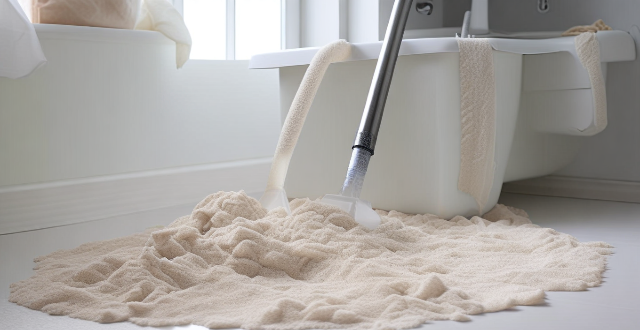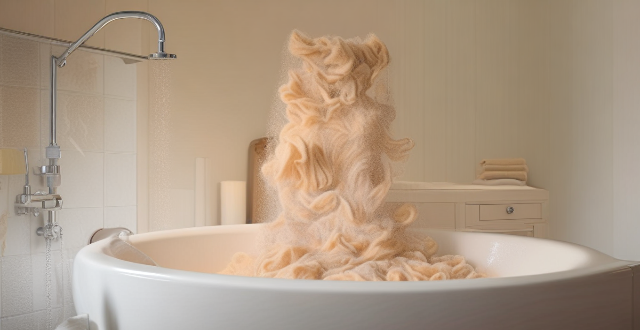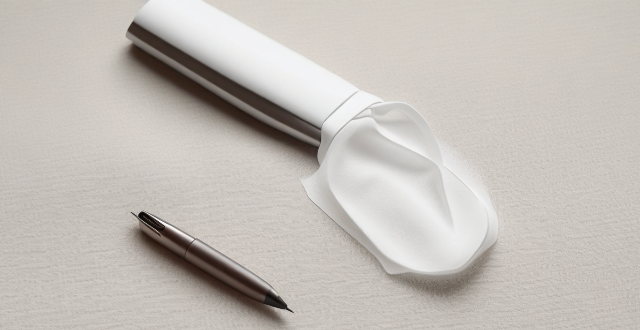Stain Create

Can vinegar be used as a natural stain remover for clothes ?
Vinegar can be used as a natural stain remover for clothes due to its acidic properties and antimicrobial benefits. It is effective in removing various types of stains, including grass, blood, wine, coffee, tea, and sweat. To use vinegar as a stain remover, apply it directly to the stain, let it sit for 5-10 minutes, scrub gently, rinse with cold water, and wash according to care label instructions. Vinegar is cost-effective, environmentally friendly, and versatile. However, it should be tested on an inconspicuous area before use and avoided on delicate fabrics.

Are there any DIY tricks for getting out tough stains like blood or grass ?
When it comes to removing tough stains like blood or grass, there are several DIY tricks you can try before resorting to professional cleaning services. These include soaking the stained area in cold water, applying hydrogen peroxide directly to the stain, creating a paste with salt and cold water, applying white vinegar directly to the stain, mixing lemon juice with salt to create a paste, and mixing dish soap with baking soda to create a paste. It is important to always test any solution on an inconspicuous area of the fabric first to ensure it doesn't cause damage or discoloration. If these DIY methods fail, consider seeking professional help from a cleaning service.

How do I remove stubborn stains from carpets and upholstery ?
Removing stubborn stains from carpets and upholstery requires identifying the type of stain, acting quickly, pre-treating, gently blotting or scrubbing, rinsing and drying thoroughly, and possibly seeking professional help. Testing cleaning solutions on an inconspicuous area before use is recommended to avoid damage or discoloration.

Is there a natural way to clean stains off my clothes ?
Removing stains from clothes can be challenging, but natural methods like using white vinegar, baking soda, lemon juice, hydrogen peroxide, and salt can effectively clean various types of stains. These techniques are gentle on the environment and clothing.

What is the most effective method for removing wine stains from fabric ?
The most effective method for removing wine stains from fabric involves acting quickly, blotting the stain, applying salt and a stain remover, rinsing with cold water, washing the fabric, and checking the stain before drying.

What are the best ways to remove stains from clothes ?
Removing stains from clothes requires pre-treatment, stain removers, home remedies, laundry detergent, and sometimes professional dry cleaning. Pre-treating the stain by blotting it with a clean cloth or paper towel is crucial. Commercial stain removers can be effective for various stains, while home remedies like baking soda and vinegar, hydrogen peroxide, and lemon juice can tackle stubborn stains. Applying laundry detergent directly to the stain and washing it afterward can also work. For delicate fabrics or persistent stains, professional dry cleaning may be necessary. By following these steps, most types of stains can be effectively removed from clothing.

How do I remove ink or pen marks from my clothing ?
Removing ink or pen marks from clothing can be challenging, but with the right techniques, it's often possible. Identify the type of ink, act quickly to blot wet ink, pre-treat the stain using appropriate methods for water-based, oil-based, or permanent marker ink, machine wash following care label instructions, check the stain before drying, and dry according to care label instructions. Always test cleaning solutions on an inconspicuous area first and consider professional cleaners for delicate or valuable garments. Patience and persistence are key when dealing with stubborn stains.

How can I get rid of grease stains on my favorite shirt ?
Removing grease stains from your favorite shirt can be a daunting task, but with the right techniques and products, it is possible to get rid of these unsightly blemishes. Here are some steps you can follow to remove grease stains from your favorite shirt: 1. Act Quickly: The first step in removing grease stains is to act quickly. The longer the stain sits on your shirt, the harder it will be to remove. As soon as you notice the stain, take action to remove it. 2. Blot the Stain: Use a clean cloth or paper towel to blot the stain gently. Do not rub the stain aggressively, as this can spread the grease further into the fabric. Instead, apply gentle pressure to absorb as much of the grease as possible. 3. Apply a Stain Remover: Apply a stain remover specifically designed for grease stains. You can use a commercial stain remover or make your own by mixing equal parts of dish soap and white vinegar. Apply the solution directly to the stain and let it sit for 5-10 minutes. 4. Wash the Shirt: After allowing the stain remover to sit on the stain, wash the shirt in cold water using a laundry detergent that contains enzymes. Enzymes are effective at breaking down grease and oil, making it easier to remove the stain. Avoid using hot water, as this can set the stain permanently. 5. Check the Stain: Before drying the shirt, check to see if the stain has been removed. If the stain is still visible, repeat steps 3 and 4 until the stain is completely gone. Do not dry the shirt until the stain is completely removed, as heat can set the stain permanently. 6. Dry the Shirt: Once the stain is removed, dry the shirt according to the care label instructions. If you are unsure about the care instructions, it is best to air dry the shirt or use a low heat setting on your dryer. In conclusion, removing grease stains from your favorite shirt requires quick action, the right products, and patience. By following these steps, you can effectively remove grease stains and keep your favorite shirt looking its best.

What's the best way to treat set-in stains on white clothing ?
Set-in stains on white clothing can be stubborn and difficult to remove, but with the right approach, they can often be successfully treated. Here are some steps to follow: 1. Identify the Stain: First, identify the type of stain you are dealing with. Different stains require different treatments. For example, protein stains like blood or grass require a different approach than tannin stains like tea or coffee. 2. Act Quickly: The sooner you treat a stain, the easier it is to remove. If the stain is still wet, blot it with a clean cloth or paper towel to remove as much of the substance as possible. 3. Pre-Treat the Stain: Before washing, pre-treat the stain with a suitable stain remover. Choose a product that is safe for use on white clothing and apply it directly to the stain following the instructions on the label. Let it sit for the recommended time. 4. Wash in Hot Water: Wash the garment in hot water, using a detergent that is designed for white clothing. Check the care label on your garment to ensure that it can be washed in hot water. If not, use the warmest water recommended. 5. Use Chlorine Bleach if Necessary: If the stain persists after washing, you can use chlorine bleach. However, be sure to check the care label on your garment first. Some fabrics may not be able to handle bleach. If your garment is made of a material that can be safely bleached, add chlorine bleach to the wash cycle according to the package instructions. 6. Rinse Thoroughly: Rinse the garment thoroughly to remove all traces of the stain and any cleaning products used. 7. Dry and Check: Dry the garment and check to see if the stain has been removed. If not, repeat the process before drying again. Once the stain is gone, you can dry the garment as usual. In conclusion, treating set-in stains on white clothing requires patience and persistence. By identifying the stain, acting quickly, pre-treating, washing in hot water, using chlorine bleach if necessary, rinsing thoroughly, drying, and checking, you can often successfully remove even the most stubborn stains.

Is it possible to remove rust stains from fabric without damaging it ?
Rust stains can be removed from fabric using natural ingredients such as lemon juice and salt, vinegar and baking soda, or hydrogen peroxide. These methods are effective in breaking down the rust and lifting it away from the fabric without causing damage. It is important to test any cleaning solution on a small area of the fabric before applying it to the stain and to allow enough time for each method to work. If one method does not work, try another one until the stain is completely removed. After removing the rust stain, wash the fabric according to its care instructions to remove any residual cleaning solution and prevent further damage.

How can I create a quick and delicious snack ?
This article provides a simple guide on how to create a quick and delicious snack using fresh fruits, nuts, yogurt, honey, and cereal. It includes steps for preparation, mixing, and serving the snack. The author encourages readers to experiment with different ingredients and flavors to create their own unique snack.

How do I create an effective study plan ?
Creating an effective study plan is crucial for academic success. Here are some steps to help you create a successful study plan: 1. Set clear goals that are specific, measurable, achievable, relevant, and time-bound (SMART). 2. Assess your time and determine how much you can realistically dedicate to studying each day/week. 3. Allocate time for each subject based on difficulty level and proficiency. 4. Create a schedule using a calendar or planner and stick to it as much as possible. 5. Incorporate short breaks during study sessions to avoid burnout and maintain focus. 6. Regularly review progress and adjust the study plan accordingly. 7. Eliminate distractions by finding a quiet place to study and turning off unnecessary devices. 8. Stay motivated by reminding yourself of goals and celebrating small achievements. 9. Seek help when needed from teachers, tutors, or classmates. By following these steps, you can create an effective study plan that will help you achieve academic success while managing your time efficiently. Remember to stay flexible and adjust your plan as needed to accommodate changes in your schedule or priorities.

How do I create a comprehensive estate plan ?
Creating a comprehensive estate plan is essential to ensure your assets are distributed according to your wishes after you pass away. Here are some steps to help you create a comprehensive estate plan: 1. Determine your goals and objectives, such as who you want to inherit your assets and how you want them distributed. 2. Gather information about all your assets, including real estate, bank accounts, investments, life insurance policies, and personal property. 3. Choose beneficiaries for your assets, including individuals, charities, or trusts. 4. Consider tax implications, such as federal and state estate taxes, gift taxes, and generation-skipping transfer taxes. 5. Create legal documents such as a will, power of attorney, healthcare proxy, and living will to ensure your wishes are carried out in case of incapacity or death. 6. Set up trusts to manage your assets during your lifetime and distribute them after your death. 7. Review and update your plan regularly to ensure it remains current with changes in your life. Working with a qualified professional can help ensure that your estate plan meets your needs and achieves your desired outcomes.

How do you create engaging and effective digital ads ?
Creating engaging and effective digital ads is crucial for businesses to stand out in the crowded online space. Here are some tips on how to create compelling digital ads: 1. Know Your Audience: Research your target audience's preferences, behaviors, and pain points to create buyer personas that represent your ideal customers. 2. Clear and Concise Messaging: Clearly communicate the unique value proposition of your product or service, highlight the benefits, and include a clear and compelling call to action (CTA). 3. Visual Appeal: Use high-quality images that resonate with your target audience, maintain consistent branding, and consider incorporating video content for better engagement. 4. A/B Testing: Create multiple versions of your ad with different elements, track key performance indicators (KPIs), and optimize your ad based on the best-performing variations. 5. Social Proof: Include customer testimonials or reviews, share case studies, and collaborate with influencers to build trust and credibility. 6. Mobile Optimization: Ensure that your ad is optimized for mobile devices, minimize load time, and make sure CTAs are easily clickable on smaller screens. By following these strategies, you can create digital ads that not only capture attention but also drive conversions and achieve your marketing goals.

How can I create an effective weekly shopping list ?
Creating a weekly shopping list requires planning, organization, and attention to detail. Here are some steps to help you create an effective weekly shopping list: 1. Plan your meals for the week. 2. Check your pantry and fridge to see what items you already have on hand. 3. Make a master list of all the items you typically buy. 4. Categorize your list into sections such as produce, meat/poultry, dairy, frozen foods, and non-perishables. 5. Prioritize your list based on importance and expiration date. 6. Use technology to help you create and manage your shopping list. 7. Review and update your list after completing your weekly shopping. By following these steps, you can save time, money, and stress while ensuring that you have everything you need for the week ahead.

How do I create a budget for a special project at work ?
Creating a budget for a special project at work requires careful planning and consideration of various factors. Here are some steps to help you create an effective budget: 1. Define the project scope, including goals, objectives, and deliverables. 2. Identify all resources needed, such as personnel, equipment, software, and materials. 3. Estimate costs associated with each resource, including direct and indirect costs. 4. Determine funding sources and how much funding is available. 5. Create a timeline with key milestones and deadlines. 6. Assign responsibilities for managing different aspects of the budget. 7. Regularly monitor progress and adjust the budget as needed.

How can I create an environment that encourages creative expression ?
Creating an environment that encourages creative expression is essential for fostering innovation, personal growth, and problem-solving skills. Here are some tips on how to create such an environment: 1. Set the tone by making everyone feel comfortable sharing their ideas and opinions without fear of judgment or criticism. 2. Provide opportunities for self-expression through various forms of media, such as writing, drawing, music, or dance. 3. Foster collaboration by encouraging teamwork and brainstorming sessions where everyone feels valued and heard. 4. Create a safe space where people feel comfortable taking risks and making mistakes. 5. Offer incentives and recognition to motivate individuals to continue exploring their imagination. 6. Provide resources and tools that support creative expression, such as art supplies, software, or access to workshops and training programs. 7. Encourage time for reflection and inspiration by providing regular breaks, mindfulness exercises, or a quiet space for contemplation. 8. Promote diversity and inclusion to encourage different perspectives and ideas, leading to more creative solutions.

How can I create an effective study schedule for exams ?
Creating an effective study schedule for exams is crucial for academic success. To create a study plan that works for you, follow these steps: 1. Identify your goals and prioritize your study time effectively. 2. Assess your time availability and be realistic about the amount of time you can dedicate to studying without sacrificing other important aspects of your life. 3. Break down the material into smaller sections or topics and map out when you will study each topic using a planner or calendar. 4. Create a study schedule based on your goals, time availability, and material breakdown. Allocate enough time for each topic, schedule regular breaks, incorporate different study techniques, and be flexible with your schedule. 5. Stick to your schedule as much as possible and use reminders or alarms to help you stay on track. 6. Periodically evaluate your progress and adjust your study schedule accordingly. By following these steps, you can maximize your chances of achieving academic success while minimizing stress and anxiety during exams.

How is artificial intelligence being used to create new forms of entertainment ?
Artificial intelligence (AI) is revolutionizing the entertainment industry by creating new forms of entertainment that were not possible before. AI has enabled the development of personalized and interactive experiences that engage audiences in ways never seen before. Here are some examples of how AI is being used to create new forms of entertainment: 1. Personalization: AI algorithms are being used to personalize entertainment content for individual users. For example, streaming services like Netflix and Amazon Prime use AI to recommend movies and TV shows based on a user's viewing history and preferences. 2. Interactive Experiences: AI-powered virtual assistants and chatbots are being used to create interactive experiences that allow users to engage with entertainment content in new ways. For example, the game "Detroit: Become Human" uses an AI-powered system to allow players to interact with characters in the game in a natural and realistic way. 3. Content Creation: AI is also being used to create new forms of entertainment content. For example, AI-generated music and art are becoming increasingly popular. AI algorithms can analyze existing music and art to create new pieces that are unique and original. 4. Gaming: AI is being used to enhance gaming experiences by creating more realistic and challenging gameplay. For example, AI-powered non-player characters (NPCs) can behave more realistically and adapt to a player's actions, making the game more engaging and challenging. 5. Virtual Reality and Augmented Reality: AI is being used to create more immersive virtual reality (VR) and augmented reality (AR) experiences. For example, AI algorithms can track a user's movements and adjust the VR or AR environment in real-time to create a more realistic and engaging experience. In conclusion, AI is being used to create new forms of entertainment that are more personalized, interactive, and engaging than ever before. From personalized recommendations to AI-generated content, the possibilities for AI in the entertainment industry are endless. As AI technology continues to evolve, we can expect even more innovative and exciting forms of entertainment to emerge.

How can educational game developers create engaging and interactive games without sacrificing educational content ?
Educational game developers can create engaging and interactive games without sacrificing educational content by focusing on clear objectives, gamification techniques, feedback mechanisms, collaborative features, and customization options. These key aspects can help developers create experiences that are both fun and educational for players of all ages.

How can I prevent stains from setting into my laundry ?
To prevent stains from setting into laundry, promptlyTo prevent stains from setting into laundry, promptly, sort clothes by color and use cold water for washing, launder immediately after wearing, and avoid overloading the washer.

How do I achieve a professional-looking makeup job in a hurry ?
Achieving a professional-looking makeup job in a hurry is possible with the right techniques and products. Prepare your skin by cleansing, moisturizing, and priming. Choose the right foundation formula and apply it with a makeup sponge or dense brush for even coverage. Contour and highlight to define facial structure and add a glowing effect. Add color with blush, bronzer, eyeshadow, and eyeliner, and choose a long-lasting lipstick or stain. Set your makeup with setting powder and spray, and carry key items for quick touch-ups. Practice makes perfect, so streamline your routine and find what works best for you when you're in a hurry.

What are some effective strategies for doing laundry in less time ?
Effective strategies for doing laundry in less time include planning ahead, using a larger capacity washer, pretreating stains, using cold water and high-efficiency detergent, using the quick wash cycle, and hanging clothes to dry. These strategies can save time, energy, and money while still getting clothes clean and fresh.